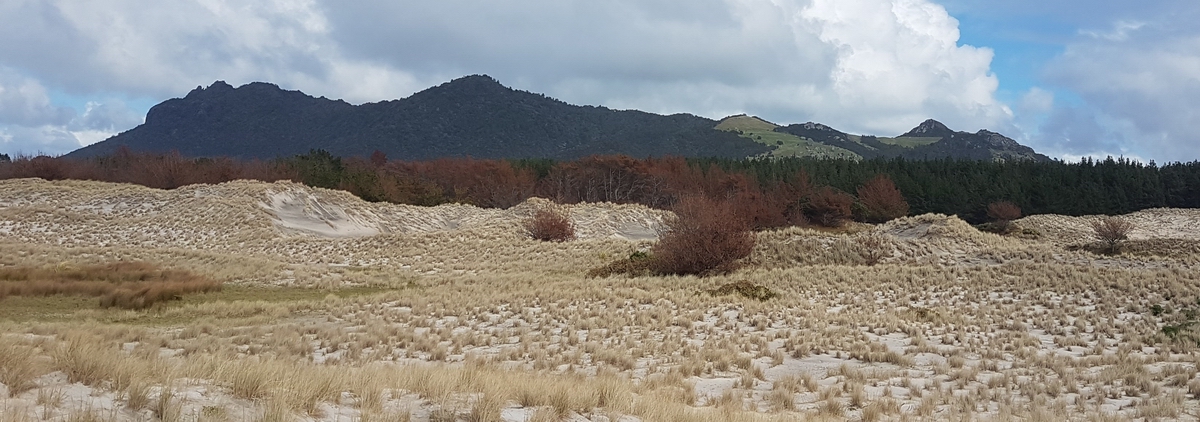Significant funding announced for Northland wilding pines projects
3 Nov 2021, 8:00 AM
Northland Regional Council has been awarded $1.3 million of funding for 2021-22 under the National Wilding Conifer Control Programme, creating a significant opportunity to make further progress in the battle against wilding pines.
The funding consists of $960,000 for the Far North (Te Hiku area) and $340,000 for Whangārei Heads (including Parua Bay). In Te Hiku, the focus of this year’s control programme is the Aupouri Peninsula, including Mt Camel farms and Te Paki Station. The funding for Whangarei Heads will continue the momentum of projects already underway at various locations.
NRC will work with local iwi, private landowners, weed action groups, local communities, district councils and the Department of Conservation to carry out the work.
Northland Regional Council Chair Penny Smart says, “We’ve made a strong start to this mahi, and it’s had some great results. The brown, dying pine trees people might now see around Northland are actually excellent news for our native species. This work is also providing employment for Northlanders, including upskilling and career opportunities for rangatahi.”
Wilding pines can significantly affect an area’s biodiversity and disrupt areas of cultural significance for Māori. Chair Smart says NRC staff will continue to work together with landowners, iwi/hapū, district councils, Department of Conservation and other stakeholders to tackle this ever-growing problem.
“Some of Northland's most unique habitats are vulnerable to invasion, so it’s important to keep on top of this issue. If we can keep the pressure on, and extend that to other areas of Northland in future years, we have a good chance of eradicating wilding pines in Northland within 15 years.”
Since Biosecurity NZ, part of the Ministry for Primary Industries (MPI), began its latest phase of wilding pines control in 2019, Northland has been allocated more than $4 million to protect vulnerable habitats such as dune lakes and wetlands from encroaching wilding pines.
The latest funding extends the mahi that began as a Covid relief programme in 2020. Becoming part of MPI’s national programme is quite a milestone, says Pou Tiaki Pūtaiao – Group Manager Biosecurity Don McKenzie, and it represents a significant step up in NRC’s capacity to deal with this long-standing problem.
“We’re delighted to be under the umbrella of the national programme to address Northland’s ongoing issue with wilding pines. Pine trees are a valuable resource when in plantation forests, but in the wrong place these trees can damage our unique biodiversity.
“We applied for funding to cover projects throughout Northland and succeeded in getting funding for the Te Hiku and Whangārei Heads areas – so for this coming year, that’s where our focus will be. It gives us the chance to make a strong impact on wilding pines in a specific area, and we hope to get funding in future years to cover other areas of Northland.”
NRC is also pleased, adds McKenzie, that Te Orewai Te Horo Trust secured $200,000 through MPI’s latest round of community partnership projects funding, to help control wilding pines in their rohe.
The mahi is part of the trust’s larger restoration project in the northern Kaipara catchment, which involves waterway restoration, fencing, and extensive planting initiatives. The trust plans to employ locals to control wilding pines across iwi and privately owned land; NRC will support the control work over a two-year period.
The National Wilding Conifer Control Programme funding announcement builds on the wilding pines work carried out around Northland over the past year, thanks to MPI’s previous allocations via the community partnership fund. From July 2020 to June 2021, NRC and contractors eradicated 98,114 wilding pines at 61 sites around Northland, across an area of 4800ha.
Among the control sites were the fragile sand-dune systems at Great Exhibition Bay and Kauri Mountain beach, and the much-loved dune lakes at Lake Ngatu and Kai Iwi (Taharoa Domain). Other locations included wetlands, native forest, gum lands and some of Northland’s iconic coastline.

Dying wilding pines at Kauri Mountain Beach are making way for valued ecosystems, such as dunes and forests, to grow stronger.
